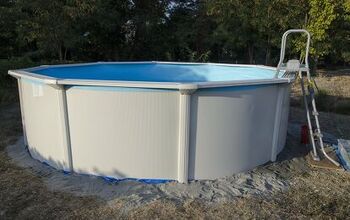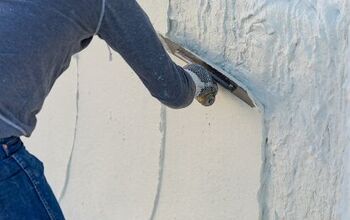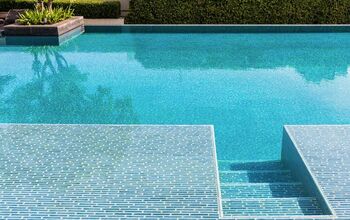Play Sand Vs. Pool Sand: What Are The Major Differences?

When I first found out that pool filters contained sand, my mind was blown. I immediately made the (wrong) assumption that pool filter sand is the same as the sand found in playgrounds and sandboxes. While the two are fairly similar, the fact is that they are very different. It makes sense, too. Did you ever wonder what the biggest differences are between these two sand types, and why you can’t use play sand in a pool filter?
Pool sand and play sand are two distinctly different materials. Pool sand is exclusively made of small silica particles and is often tinted white, pink, or light green. Meanwhile, play sand is typically brown and can be made from a wide range of different materials. Pool sand can trap particles in a filter, while play sand is too large to adequately filter a pool.
If you’ve ever seen the price tag on pool sand, you might be tempted to try to replace pool sand in your filter with play sand. Don’t! Our guide will explain why.
Do You a Need Pool, Spa, or Hot Tub Contractor?
Get free, zero-commitment quotes from pro contractors near you.

The Many Differences Between Pool Sand And Play Sand
Sand is sand, right? Wrong. When it comes to pool filtration, the sand that you choose will make a huge difference in how safe your water is. This guide will help you understand the differences between these two sand types and explain why your filter needs pool sand to work properly.
Size
The biggest difference between pool sand and play sand can be found in the size of the sand granules. Play sand is small, but it’s still big enough to be easy to see the individual grains without squinting. It also doesn’t have a mandated size maximum. You can get larger particles or even gravel-sand for a playground if you want to.
Pool sand, on the other hand, has a maximum size. The sand found in a pool filter cannot be larger than half a millimeter in diameter. Any larger, and the sand will be unable to trap the impurities that it’s supposed to trap. This gives pool sand a texture that feels powdery rather than sandy.
Color
When it comes to color, there is a huge difference between play sand and pool sand. Play sand tends to be darker in color and traditionally has a sandy beige or brown appearance. In recent years, some playgrounds also use black sand simply because it looks nicer. Darker colors like this help hide dirt, which is great when you have a bunch of kids rolling around in it.
Pool sand, on the other hand, doesn’t work well with dark colors. To ensure that pool owners are able to tell when they need to change out the sand, pool sand manufacturers keep the sand colors light. The most common pool sand color is white. However, some brands will also use blue, greens, and pinks to help people see debris easier.
Material
If you can’t tell, the manufacturing standards that people have for play sand are far looser than what you would see in pool sand. This goes for the materials that are used in production too. Pool filter sand is exclusively made from silica, a material that is derived from quartz. Silica is one of the more effective materials when it comes to being able to “grab” debris and impurities, which is why it is a must for pool sand.
Play sand, on the other hand, is usually made primarily of silica. However, it doesn’t always have to be silica. In fact, it doesn’t even have to be 100 percent silica. It can be 40, 50, or 60 percent in many cases. Though it’s rare, there are even play sands that contain 0 percent silica. So, it’s a total crapshoot when it comes to the material that play sand is made from.
Filtration
This is the biggest difference between play sand and pool sand. Pool sand is manufactured to be used in the filtration of a pool, which means that it is meant to catch the impurities, oils, and scum that is being filtered out of your water. That’s its primary purpose, and it’s highly efficient at doing so. Good pool sand will be able to filter out between 80 to 99 percent of all biological contaminants. Wow!
Play sand doesn’t really have that ability. Or rather, it doesn’t have that ability to the extent that pool sand would because its particles aren’t as “grippy” as pool sand. While it does filter out *some* particles because it is still sand, how much it will filter out is going to be significantly less. You might be able to get around 5 to 10 percent of all contaminants filtered out in some cases. That’s not good.
All sand will be able to filter out impurities to some extent, but most will not be as safe to use as pool sand for that specific purpose. Because play sand doesn’t have the necessary level of filtration ability for safe swimming, it should never be used in your filter. You can even use a sand filter if you have a saltwater system.
Price
Finally, let’s talk about the other elephant in the room: the price of each type of sand. Though both types are not about to break the bank for anyone’s budget soon, there is still a distinct difference between the price of each. 50 pounds of pool sand usually costs between $12 to $17, though it’s possible to find pricier options on the market if you look.
Play sand, on the other hand, is dirt cheap. A 50-pound bag of play sand will cost around $3 to $6 dollars, making it roughly half the price of pool sand. Moreover, play sand is often sold in bulk. This further decreases the price you should expect to pay if you want to fill up a large sandbox. It’s not unusual to hear of play sand costing as little as $10 per ton.
What Happens If You Put Play Sand In Your Pool Filter?
Now that we’ve gone over the basic differences between these two types of sand, it’s time to address the question everyone has. If someone were to put a bunch of play sand in your pool filter, you might be wondering what would happen. So, let’s talk about it because it’s not a good idea.
Structurally, most types of play sand will not cause damage to your filter. However, it still will turn into a major chore when you need to remove the sand. In some cases, rougher play sand could theoretically scratch the inside of your filter and weaken it. However, this is not something that you should assume will happen.
Functionally, play sand that’s put in a pool filter will just not work very well. You will probably notice that the pool water that comes out of the filter will be cloudy. If you leave the sand in the for a long time, your pool water may also start to stink and have visible debris floating in it. The longer you leave the sand there, the worse the outcome will be. In some situations, the filter may also start leaking sand into your pool.
Because play sand has very little filtration abilities, you cannot rely on it to filter out all the junk that is in your pool. Using it as a filter is almost as bad as having a pool without any filter whatsoever. The bottom line is that you need to stick to pool sand, full stop.
Do You a Need Pool, Spa, or Hot Tub Contractor?
Get free, zero-commitment quotes from pro contractors near you.

Related Questions
How much pool sand do I need for my filter?
Every sand pool filter is different in terms of size and power. However, one thing will remain the same. Virtually all the pool filters that are on the market require you to put in around 2/3 the volume of the filter itself. So if you have a 150-pound filter, you will need to put in 100 pounds of pool sand into it.Do not overfill a pool filter. Filling it to the brim with sand can cause it to malfunction or even break. If you aren’t sure how many pounds of sand you need to order, check with your pool filter’s website.
Is there a difference between white pool sand and pink/green pool sand?
For the most part, there is no difference between standard white pool sand and pool sands of other colors. Most of the sands that are colored are treated with a dye. The dye is meant to help brands stand out, but also can work to make impurities appear more noticeable. If you are worried about function, don’t be. All of the different pool sands out there are fairly similar in terms of purity and function.
Is play sand hazardous?
Honestly, the jury is out on this right now. The EPA and other boards are currently investigating whether or not the fine dust in play sand is dangerous. With that said, there are a lot of groups who are concerned that the dust could irritate lungs or even cause cancer long-term. If you aren’t sure whether you should use play sand, it may be better to use foam or wood chips instead. It is safer, by far.
Related Articles

Ossiana Tepfenhart is an expert writer, focusing on interior design and general home tips. Writing is her life, and it's what she does best. Her interests include art and real estate investments.
More by Ossiana Tepfenhart


















![How To Reset A Whirlpool Cabrio Washer [In 5 Easy Steps!]](https://cdn-fastly.upgradedhome.com/media/2023/07/31/9076531/how-to-reset-a-whirlpool-cabrio-washer-in-5-easy-steps.jpg?size=350x220)








